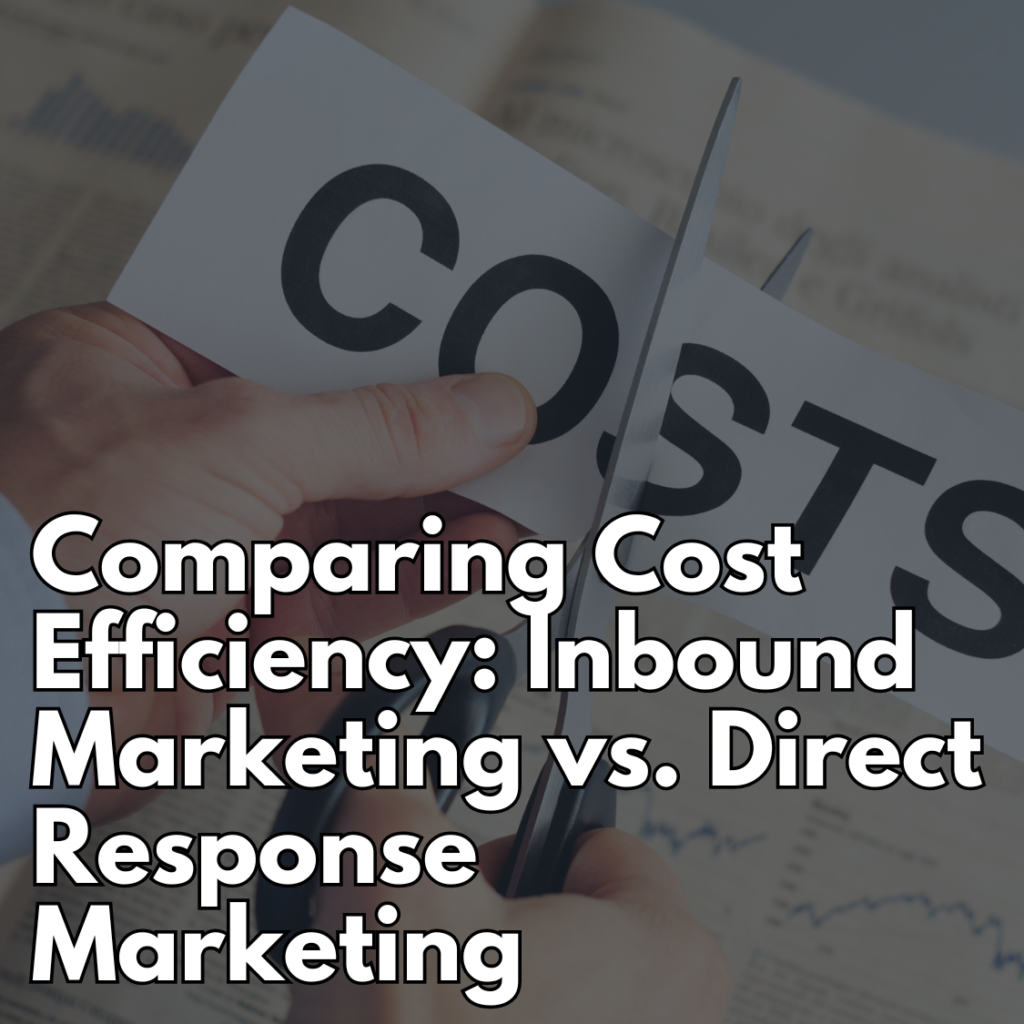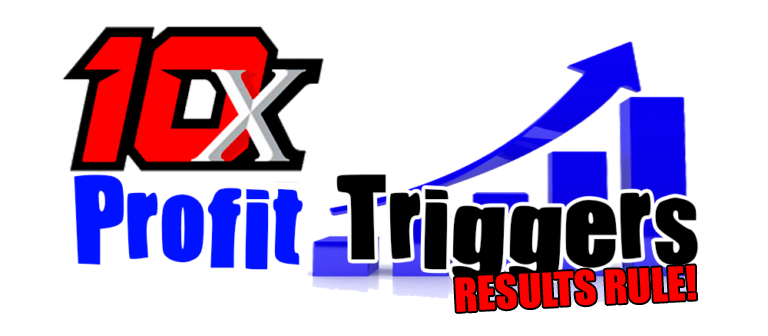
Inbound marketing is a strategy designed to organically draw in customers and nurture long-lasting relationships through tailored, value-added content. It stands in sharp contrast to direct response marketing, which is built around provoking immediate action from customers, resulting in quicker and more measurable responses.
However, within this vibrant marketing landscape, the question of cost-effectiveness takes center stage. In today’s fiercely competitive business environment, where resource allocation can significantly impact success, businesses must judiciously evaluate and select the most cost-effective marketing strategies.
Determining the most cost-effective marketing strategy is a multifaceted process, involving considerations such as business objectives, target audience, available resources, and more. When it comes to choosing between inbound and direct response marketing, businesses often grapple with identifying which one delivers the most value for their investment. While both strategies have their strengths and can drive substantial results, their cost-effectiveness can vary substantially based on the unique circumstances of each business.
Our aim is to provide you with the insights and knowledge required to make an informed decision about which strategy will prove most cost-effective for your business. This will enable you to optimize your marketing budget and maximize your return on investment.
Without further delay, let’s delve into the realm of inbound and direct response marketing to uncover which of these tried-and-true strategies could provide the most cost-effective solution for your marketing needs.
Understanding Inbound and Direct Response Marketing:
Before we dive into the comparison of their cost-effectiveness, it’s essential to gain a comprehensive understanding of what inbound and direct response marketing entail.
Inbound marketing revolves around attracting customers by creating valuable content and tailored experiences. This approach seeks to establish connections with potential customers and address their problems, organically guiding them toward your products or services. Inbound strategies encompass practices like search engine optimization (SEO), content marketing, and social media marketing, among others.
In contrast, direct response marketing adopts a more immediate and proactive approach. It aims to elicit an instant response from consumers, with the goal of driving direct sales. This strategy often employs tactics such as direct mail, email marketing, and telemarketing, compelling the audience to take specific, measurable actions like making a purchase, signing up for a newsletter, or seeking additional information.
Cost-Effectiveness of Inbound Marketing:
In the vast landscape of marketing strategies, inbound marketing stands out as a unique approach. It diverges from traditional outbound marketing, where businesses actively seek out customers, instead focusing on developing strategies that naturally draw potential customers in. Inbound marketing is characterized by its commitment to nurturing and fostering long-term relationships with consumers, as opposed to merely pursuing immediate, one-time transactions.
The hallmark of inbound marketing’s cost-effectiveness is its ability to provide a long-term return on investment. While this strategy may demand an initial investment of time and resources to create high-quality, engaging content, it distinguishes itself through the lasting value it generates. This value encompasses a wide array of activities, from crafting informative blog posts, designing visually appealing infographics, and curating enticing email newsletters to producing insightful eBooks, podcasts, or webinars.
What sets inbound marketing apart is its capacity to yield continuous, organic traffic over an extended period. Each piece of content functions as an investment, tirelessly attracting and engaging consumers at no additional cost. Over time, this results in a reduction in the cost per acquisition.
Furthermore, by consistently delivering value, your brand not only attracts potential customers but also fosters loyalty among existing customers. Loyal customers are more likely to become repeat buyers, enhancing customer lifetime value. They may also transform into brand advocates, generating valuable word-of-mouth referrals. This cumulative effect can significantly diminish long-term marketing expenditures.
For example, consider the process of creating a high-quality blog post. The initial investment encompasses researching the topic, crafting the post, optimizing it for SEO, and promoting it. However, once the blog post is live and optimized for search engines, it continues to attract organic traffic, generate leads, and convert customers without incurring additional costs. Over time, the cost per lead or acquisition diminishes, rendering the blog post a cost-effective marketing investment.
In essence, while the upfront costs of inbound marketing may appear substantial, its true strength lies in its potential for sustained, long-term growth. The initial investment in crafting valuable, value-adding content can yield substantial returns in the form of ongoing traffic, reduced customer acquisition costs, elevated customer lifetime value, and ultimately, a significant return on investment.
Cost-Effectiveness of Direct Response Marketing:
Direct response marketing embodies a more traditional and potentially aggressive approach compared to inbound marketing. Its primary objective is to elicit an immediate response from the audience, prompting them to take a specific action—be it making a purchase, subscribing, or registering. The allure of direct response marketing lies in its capacity to deliver immediate results, creating an instant impact.
This strategy heavily relies on targeting a specific audience with personalized and compelling offers. By harnessing customer data and employing persuasive calls to action, businesses can prompt their audience to act promptly.
For instance, a television commercial promoting a time-limited discount on a product or an email campaign offering an exclusive bonus with an immediate purchase exemplify direct-response marketing tactics. These tactics aim to incite an immediate response that can be measured directly, furnishing clear, quantifiable results.
One of the significant advantages of direct response marketing is its ability to provide immediate and measurable results. Every response, whether it’s a click, a call, or a purchase, can be tracked and evaluated, delivering instant data on the effectiveness of the marketing strategy. This rapid feedback mechanism empowers businesses to understand what works and what doesn’t in real-time, enabling them to fine-tune their campaigns swiftly and efficiently to enhance overall return on investment (ROI).
Moreover, the data generated from direct response marketing—comprising metrics like open rates, click-through rates, and conversion rates—provides invaluable insights into consumer behavior. When appropriately analyzed, these insights serve as a guide, enabling marketers to refine their strategies, enhance their messaging, and optimize their marketing spend for superior results. Essentially, it allows businesses to make data-driven decisions and adapt their marketing initiatives based on audience resonance.
However, the cost-effectiveness of direct response marketing is not guaranteed; it can be influenced by a myriad of factors. The production costs of marketing materials, expenses related to media purchasing, and actual response rates all contribute to the overall cost. These costs can escalate swiftly, and if response rates are low, the cost per acquisition may surge. As a result, diligent monitoring and continuous optimization of these factors are imperative to ensure that direct response campaigns maintain cost-effectiveness.
In Summary:
When it comes to comparing inbound and direct response marketing, both approaches possess unique strengths and can be cost-effective, contingent upon your business’s specific requirements and circumstances.
Inbound marketing often excels in delivering a lower cost per lead in the long term. This is primarily due to the sustained value offered by the content created, which continues to attract and engage potential customers over an extended period.

